Part of a series of articles titled The Watsons Go to Birmingham—1963.
Article
Chapter 14: Every Bird and Bug in Birmingham Stops and Wonders

Alabama Department of Archives and History. Donated by Alabama Media Group. Photo by Tom Self, Birmingham News.
Kenny wakes up to see Joey getting ready for Sunday school.
She is wearing a fluffy white skirt and her shiny black shoes. As Joey leaves, Kenny tells her she looks real pretty. Kenny falls asleep under Grandma Sands' magnolia free and wakes to a thunderous sound and shake. Then, for a brief moment, the world around Kenny seems to stop. Neighbors come outside to investigate the strange sound.
Kenny learns that somebody bombed the church Joey attended. Following his parents into the commotion, Kenny sees scared people everywhere. Momma, Dad, and Byron look all distorted, hanging onto one another and shouting. Kenny notices a man carrying a little girl in a blue dress, just like the angel from Kenny's vision in the whirlpool. Kenny makes his way into the smoky church and spots a shiny black shoe among the rubble. Trying to pull the shoe from the concrete, Kenny realizes that the Wool Pooh's square, gray fingers grasp the other end! Kenny manages to tug the shoe off a frilly white sock before escaping back toward the house. He walks past a strange atmosphere of screaming, shaken adults, and young girls laid out on the grass.
Kenny returns to Grandma Sands' house. He is sitting in bed, inspecting the shiny black shoe with its torn picture of the smiling white boy and dog, when Joetta appears in the doorway. Kenny is convinced that the Wool Pooh caught her and that she's come to say goodbye. Joey becomes upset because she can't find Momma and Dad and Kenny is acting strangely. Kenny finally looks at Joey, sees she is holding both of her shoes, and realizes Joey is alive. The Wool Pooh missed her at the church. Joey explains that she left church because she saw Kenny—wearing different clothes—laughing and waving in the street, and she followed him home. Kenny runs back towards the church to check on the rest of his family.
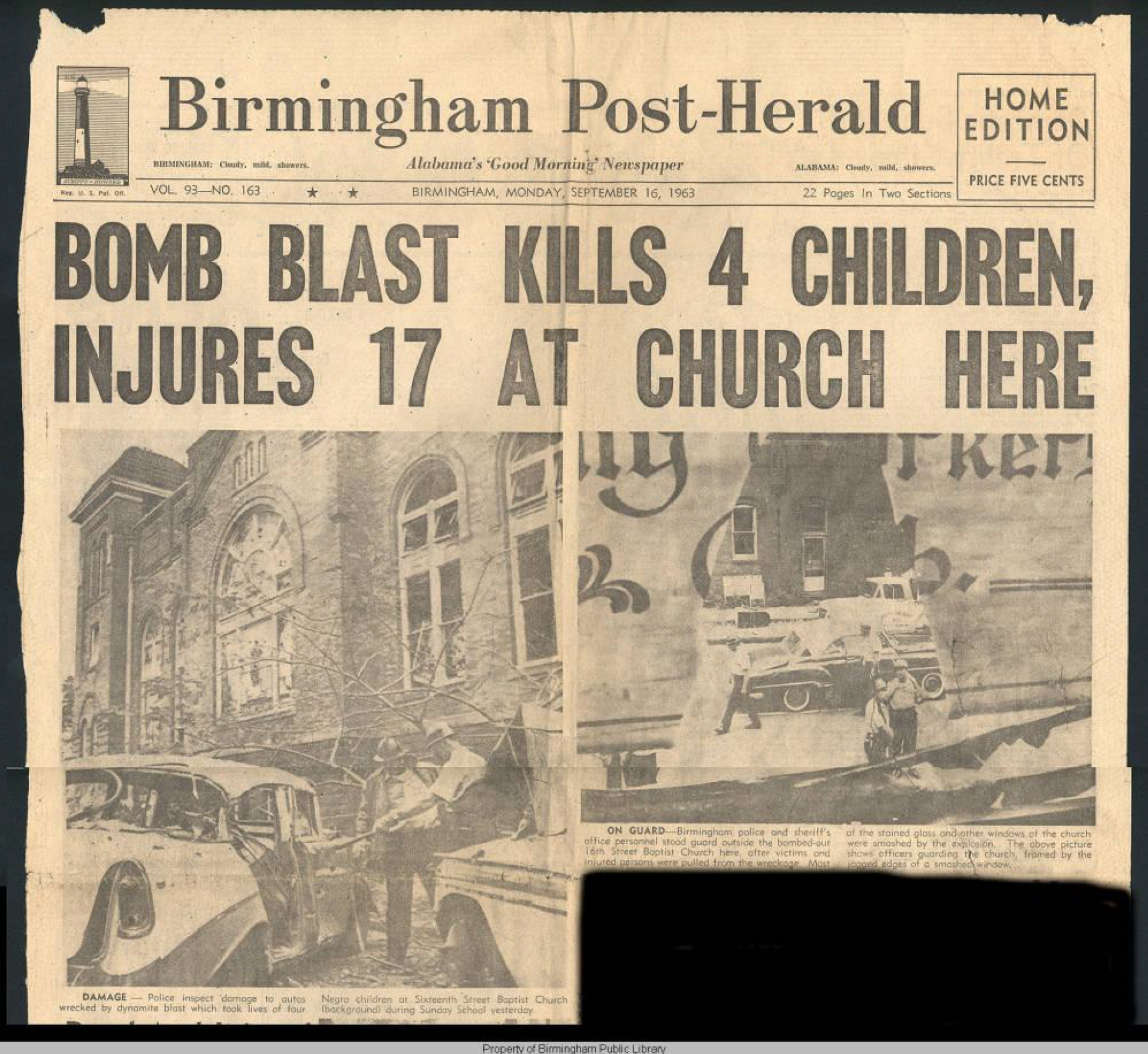
Birmingham Post-Herald 93, no. 163 (AL), September 16, 1963, 1.
Fact Check: Did a bomb explode in a Birmingham church in the summer of 1963?
What do we know?
On September 15, 1963, sticks of dynamite exploded in the basement of the 16th Street Baptist Church in Birmingham during Sunday school. Planted by members of the Ku Klux Klan, the bomb killed four girls, Addie Mae Collins (14), Denise McNair (11), Carole Robertson (14), and Cynthia Wesley (14) and injured seventeen others. Members of the Klan had previously bombed Birmingham churches as a strategy to intimidate the Black community, but this was the first time people were killed. The tragedy made international news. Experts at the crime scene suggested that the bombers used ten sticks of dynamite, meaning that they intended to kill people.
What is the evidence?
Primary source: "Bomb blast kills 4 children, injures 17 at church here," Birmingham Post-Herald 93, no. 163 (AL), September 16, 1963, 1.
Primary source:
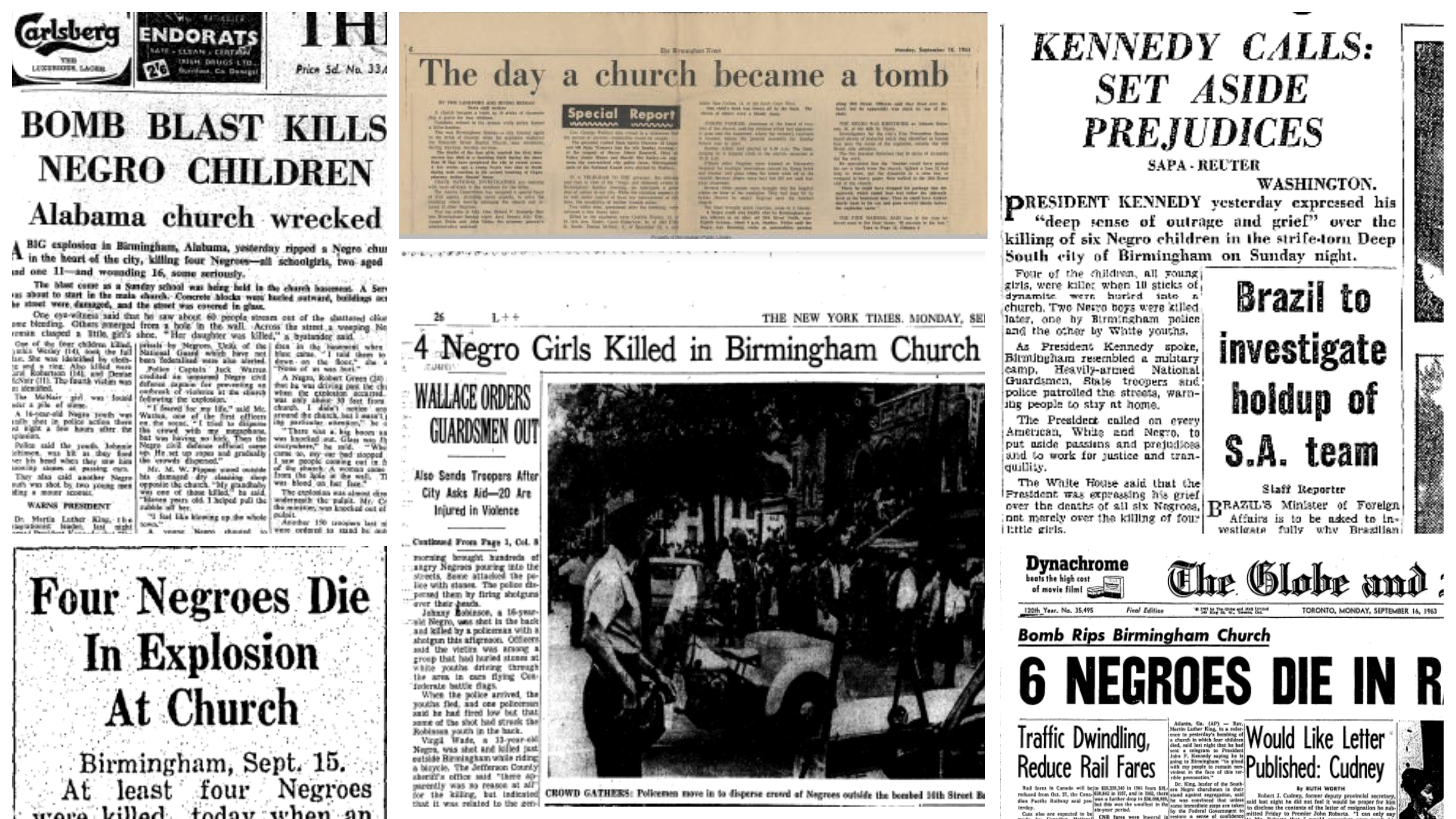
National and international news headlines after the September 15 bombing (clockwise):
"Bomb blast kills Negro children: Alabama church wrecked," headline, The Irish Times (Ireland), September 16, 1963, 1.
Tom Lankford and Irving Beiman, “The day a church became a tomb,” The Birmingham News (AL), September 16, 1963, 6.
"Kennedy calls: set aside prejudices," headline, The Rand Daily Mail (South Africa), September 17, 1963, 15.
"Bomb Rips Birmingham Church: 6 Negroes die in race terror," headline, The Globe and Mail (Toronto, Canada), September 16, 1963, 1.
"Bombing is 21st at Birmingham," headline, The New York Times (NY), September 16, 1963, 26.
"Four Negros die in explosion at church," headline, The South China Morning Post (Hong Kong), September 16, 1963, 1.
Secondary source: "Our History," 16th Street Baptist Church, Birmingham, AL, website, accessed on June 24, 2022.
"Because of segregation, the church, and other black churches in Birmingham, served many purposes. It functioned as a meeting place, social center and lecture hall for a variety of activities important to the lives of the city's black citizens. W.E.B. DuBois, Mary McLeod Bethune, Paul Robeson, and Ralph Bunche were among many noted black Americans who spoke at the church during its early years. African Americans from across the city and neighboring towns came to Sixteenth Street, then called 'everybody's church,' to take part in the special programs it hosted. Due to Sixteenth Street's prominence in the black community, and its central location to downtown Birmingham, the church served as headquarters for the civil rights mass meetings and rallies in the early 1960's. During this time of trial, turmoil and confrontation, the church provided strength and safety for black men, women and children dedicated to breaking the bonds of segregation in Birmingham, a city that black citizens believed to be the most racist in America."
Fact Check: Could "every animal and bird and bug" (and person) in Birmingham hear the blast?
What do we know?
The sound of the explosion was loud; however, even in 1963, Birmingham was a big city with suburbs. Many people in close proximity immediately ran in the direction of the church. Those farther away heard the aftereffects of the bombing. Many others later remembered that they heard the bombing, whether they actually did or not. This is called a flashbulb memory, which is a vivid picture created in response to a significant historical or traumatic event.
Primary source: Voice from the field (see below)
Photos & Multimedia
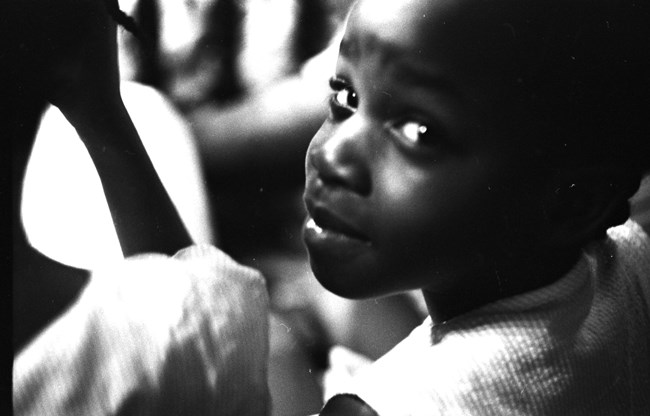
Alabama Department of Archives and History.
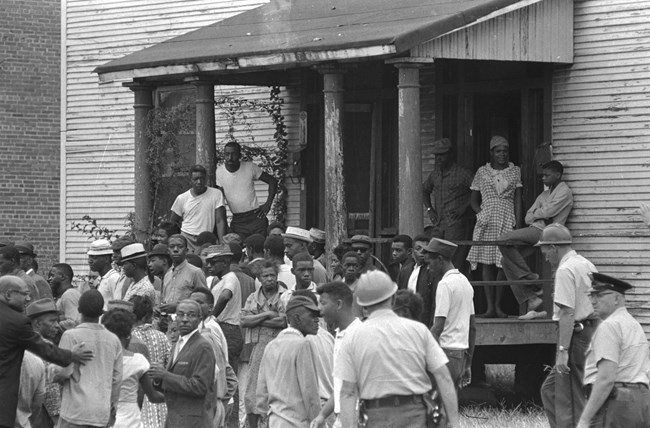
Alabama Department of Archives and History. Donated by Alabama Media Group. Photo by Vernon Merritt, Birmingham News.
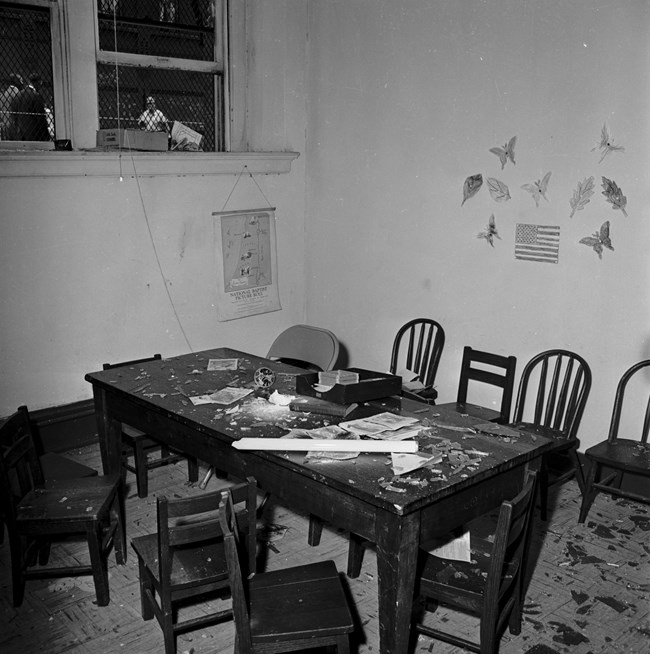
Alabama Department of Archives and History. Donated by Alabama Media Group. Photo by Tom Self, Birmingham News.

Alabama Department of Archives and History. Donated by Alabama Media Group. Photo by Vernon Merritt, Birmingham News.

Alabama Department of Archives and History.

Alabama Department of Archives and History. Donated by Alabama Media Group. Photo by Vernon Merritt, Birmingham News.

Alabama Department of Archives and History. Donated by Alabama Media Group. Photo by Tom Self, Birmingham News.

Alabama Department of Archives and History. Donated by Alabama Media Group. Photo by Vernon Merritt, Birmingham News.
Writing Prompts
Opinion
Joey gets all dressed up for church. Does it matter what one wears to a place of worship or to events often celebrated there (for example, a wedding)? Provide reasons for your position that are supported by facts and details.
Informative/explanatory
White supremacists selected 16th Street Baptist Church as their target on September 15, 1963. This church was part of a broader network of Black churches that spearheaded the Civil Rights Movement in Birmingham. Research the Historic Bethel Baptist Church. Develop the topic with facts, concrete details, quotations, or other information and examples.
Narrative
Create a “dream-sequence” story. The situation could be fantasy or danger. Imagine a situation where time moved in slow motion for the hero/protagonist. Use dialogue and vivid descriptive details as the sequence unfolds to show the response of the character to the situation.
Note: Wording in italics is from the Common Core Writing Standards, Grade 5. Sometimes paraphrased.
Last updated: January 8, 2024
